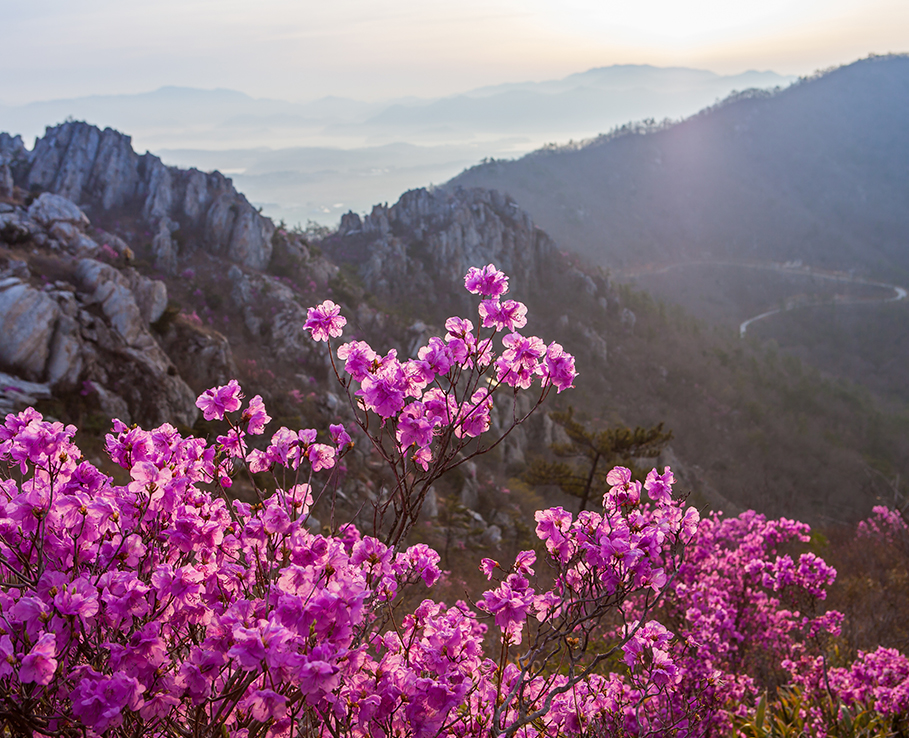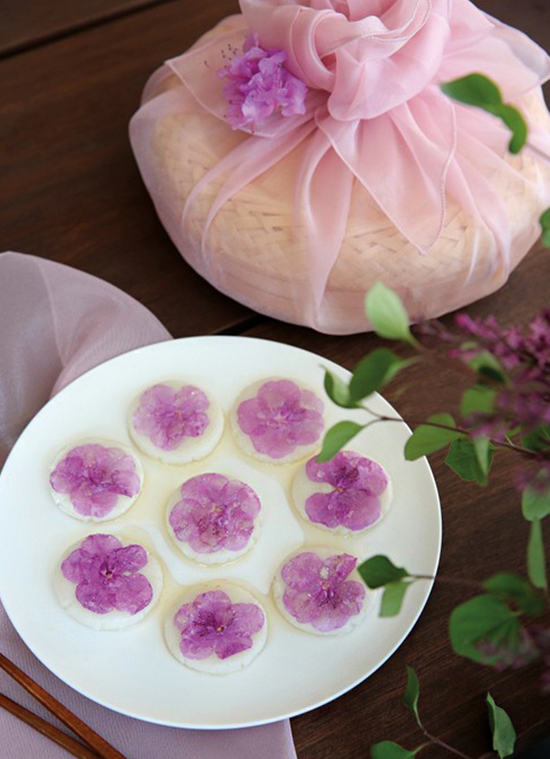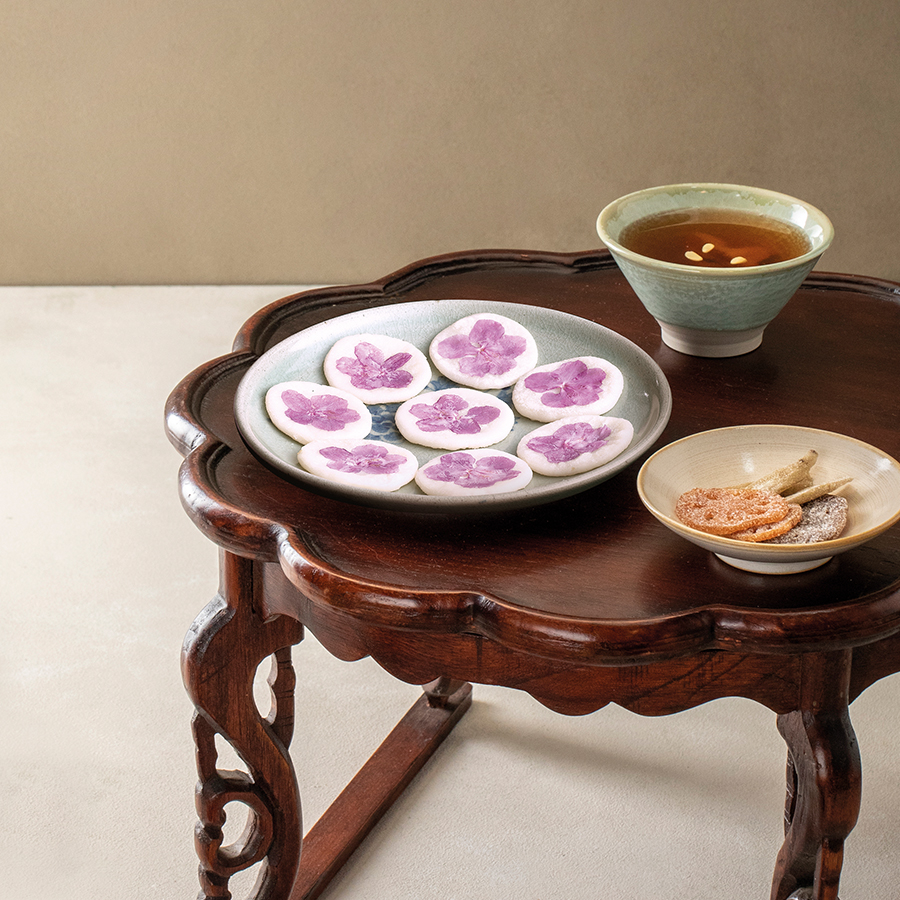April 2021

April 2021
Spring in Korea is quite a sight to behold. And while talk of this season usually conjures up images of urban streets lined with cherry blossoms and courting couples walking hand-in-hand, pausing at every few steps to snap selfies, things were not always thus. In years gone by, the rhododendron mucronulatum, a native rhododendron species called jindallae, was the true herald of springtime.
Written by
Tim Alper,
contributing writer
Photo courtesy of
Bomnarae

The flower is a distinctly light pink variety that still thrives in the wild. The deciduous bushes it grows on are a common sight on Korea’s many mountains and hills. The jindallae is one of the first flowers to make its presence felt in springtime. And its annual appearance — just like the returning migratory swallows of Europe — was once cause for nationwide jubilation.
One of the paintings in the Hyewon Pungsokdo, a series of works by Shin Yunbok (1758-1813), Korea’s most iconic artist, encapsulates the mood that must have once filled the air at this time of the year. Entitled Yeonso Dapjung (“Young Folks’ Outing”), the painting shows a group of courtesans — one with a twig laden with jindallae flowers in her hair — riding on horseback along a hillside path. More jindallae grow on the high, rocky crops in the background, as a number of young male scholars call to them with flirtatious advances.
So abundant were these flowers that they eventually found their way into the Korean kitchen. Very much edible, the jindallae is often used to flavor a sweetened alcoholic beverage named jindallaesul. But it also has a far more symbolic use in the nation’s cuisine — in the form of hwajeon.


Of distinctly light-pink hues and variety,
the deciduous flora flanking the wilderness
and mountaintops across warmer regions
of Korea are jindallae.
Hwajeon literally means “pan-fried flower,” and its name speaks volumes about the way it is prepared. Its chief ingredient is fine glutinous rice flour, often flavored with salt. Cooks make a dough from this, then shape individual pieces into small, disc-like circles, like mini, American-style pancakes. Finally, a fully bloomed jindallae is pressed into the top, before it is fried.
Cooks typically fry hwajeon in sesame oil, making for a rich, nutty flavor. Although this might not seem unusual to modern chefs, back in the days when sesame oil was a scarce and prized ingredient, the oil was indeed, used sparingly as a finishing touch. Only on special occasions — like the days on which hwajeon were consumed — would it be used as part of the cooking process.
Though certainly not flavorless, the delicacy is primarily designed to be consumed with the eyes.
Although certain flowers are nutritious, most do not constitute a hearty meal, and are mainly used to liven up otherwise plain-looking preparations.
There are a number of hwajeon varieties, all traditionally eaten at different points of the year, making use of edible blossoms from trees like pear and chrysanthemums. But the jindallae version is arguably the most aesthetically pleasing and well-known of the bunch.
 As long as you heed the delicacy of flower petals, jindallae hwajeon doesn’t require advanced skills, esp. for those experienced in making jeon (Korean pancakes).
As long as you heed the delicacy of flower petals, jindallae hwajeon doesn’t require advanced skills, esp. for those experienced in making jeon (Korean pancakes).
Eating flowers may sound unusual, but many countries have traditions of consuming blooms. In the UK, dandelions, which grow as abundantly in Northwestern Europe as rhododendron varieties do in East Asian mountains, used to be a cornerstone of British cuisine. In Italy, stuffed zucchini flowers are a common dish, while chefs all over the world like to top their salad or pasta dishes with a scattering of edible petals.
On Sangsa (one day of the year when noblewomen could gather, relatively chap-erone-free), high-status Joseon women had the liberty to take to the countryside for stunning vistas. They met in groups to picnic with their hwajeon snacks, speaking freely and frankly unlike in any other day. Then in late Joseon wherein women began enjoying more freedom, Sangsa and its corresponding snack no longer commanded such cherished presence. But even after the fall of the Joseon, the stunning preparation continues to have deep symbolic and nostalgic worth.
For some, it will always be synonymous with the end of winter and the start of clement weather. The snack is perhaps best enjoyed during a break on a hilltop hike, preferably surrounded by foliage — a veritable explosion of pinks, whites, violets and yellows that unfailingly brings hope to even the sternest of hearts. Thus, jindallae hwajeon still serves both as a reminder of the country’s bygone customs and a seasonal treat that ushers in the warmth of spring.

 Unlike other, typical varieties of jeon, hwajeon tends to be treated more like a snack and thus, paired alongside tea or drinks and snackable crisps. © shutterstock
Unlike other, typical varieties of jeon, hwajeon tends to be treated more like a snack and thus, paired alongside tea or drinks and snackable crisps. © shutterstock